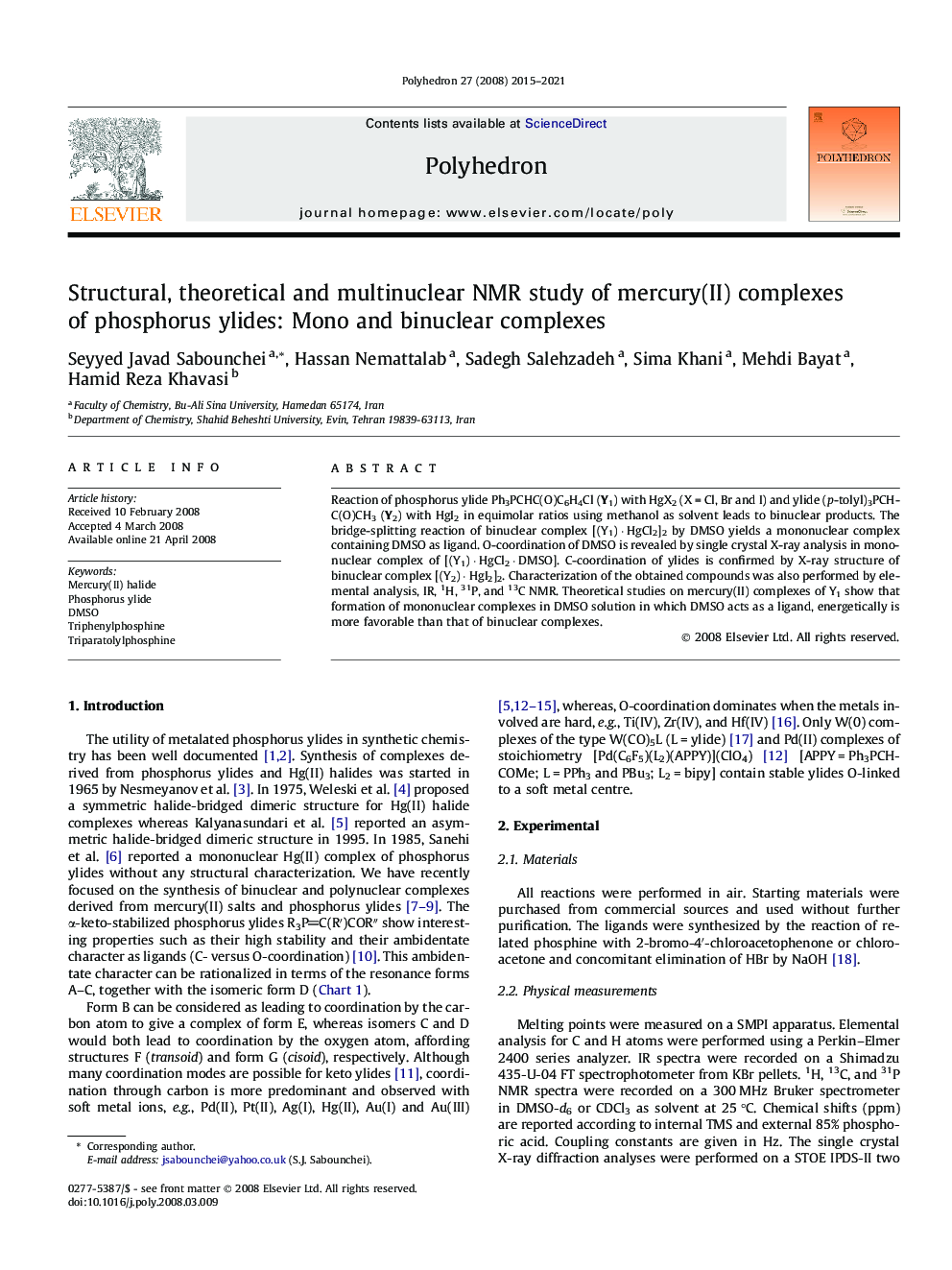| Article ID | Journal | Published Year | Pages | File Type |
|---|---|---|---|---|
| 1337846 | Polyhedron | 2015 | 7 Pages |
Reaction of phosphorus ylide Ph3PCHC(O)C6H4Cl (Y1) with HgX2 (X = Cl, Br and I) and ylide (p-tolyl)3PCHC(O)CH3 (Y2) with HgI2 in equimolar ratios using methanol as solvent leads to binuclear products. The bridge-splitting reaction of binuclear complex [(Y1) · HgCl2]2 by DMSO yields a mononuclear complex containing DMSO as ligand. O-coordination of DMSO is revealed by single crystal X-ray analysis in mononuclear complex of [(Y1) · HgCl2 · DMSO]. C-coordination of ylides is confirmed by X-ray structure of binuclear complex [(Y2) · HgI2]2. Characterization of the obtained compounds was also performed by elemental analysis, IR, 1H, 31P, and 13C NMR. Theoretical studies on mercury(II) complexes of Y1 show that formation of mononuclear complexes in DMSO solution in which DMSO acts as a ligand, energetically is more favorable than that of binuclear complexes.
Graphical abstractReaction of some phosphorous ylides with Hg(II) halides in equimolar ratios using methanol as solvent leads to parent binuclear products. The bridge-splitting reaction of one of these binuclear complexes by DMSO yields the new mononuclear complex containing DMSO as ligand. Theoretical studies show that formation of mononuclear complexes in DMSO solution energetically is more favorable than that of binuclear complexes.Figure optionsDownload full-size imageDownload as PowerPoint slide
